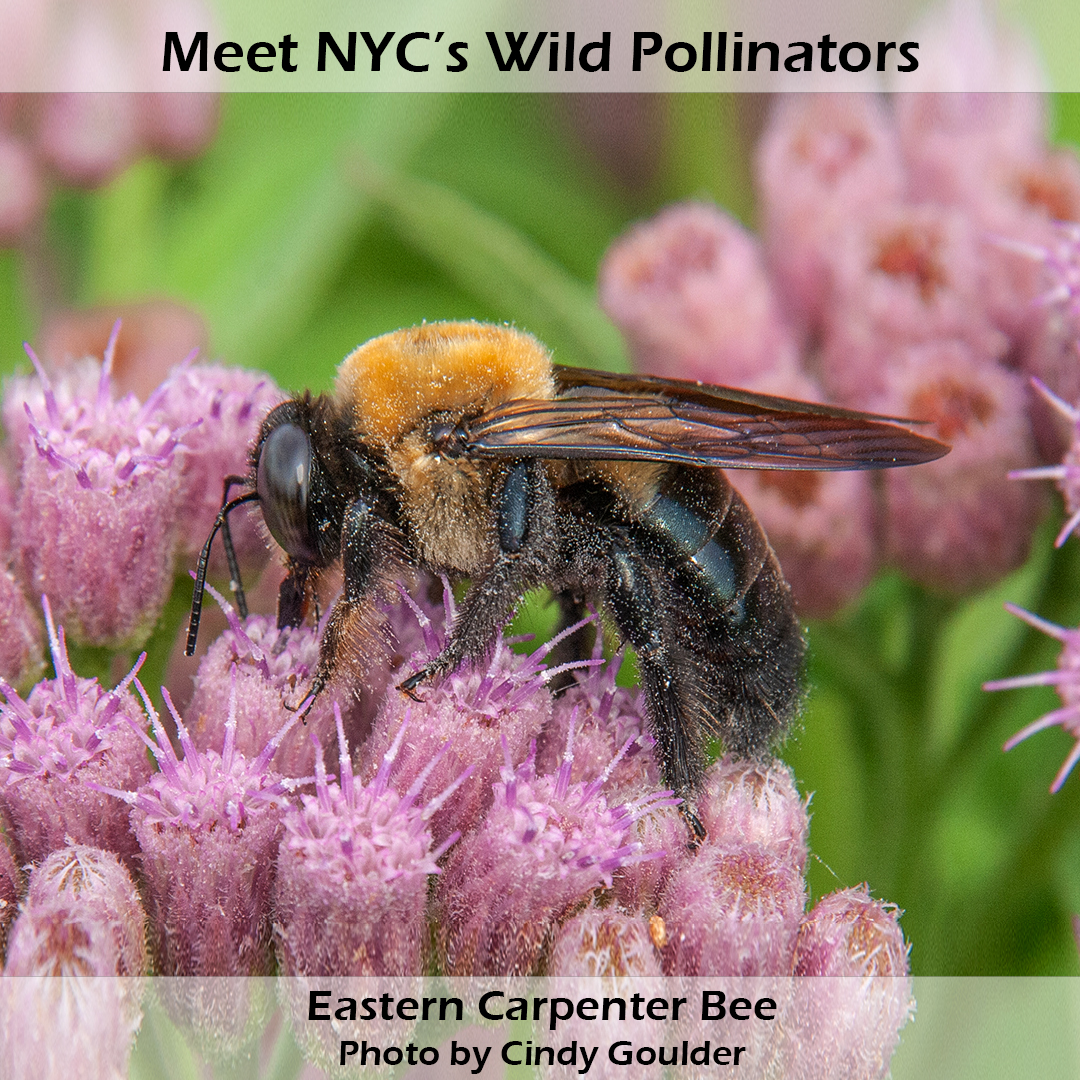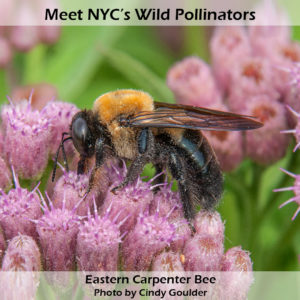
Eastern Carpenter Bee
Meet the Native Pollinators is a series aimed to provide an introduction to the many wild pollinators found in and around the NYC region. Learn more about the Eastern Carpenter Bee below.
Latin name
Xylocopa virginica
Size: 20-25mm
Flight season: March-November
Flower preferences
Feeds on a variety of flowers, including bluebells, penstemons, and food crops
Habitat
Parks, gardens, fields, and meadows
Interesting facts
Females chew holes in dead trees, logs, or stumps to make nests. They resemble bumble bees but can be distinguished by their shiny abdomen.
The male bee is unable to sting because the stinger is simply a modified ovipositor (which males lack by definition), though they will commonly approach human beings and buzz loudly around them or fly close to them.
Eastern Carpenter Bees use their maxillae to penetrate the corolla of plants and reach the nectar stores, a behavior known as nectar robbing. This happens when the bee pierces the corollas of long-tubed flowers, thus accessing nectar without making contact with the anthers and bypassing pollination. In some plants this reduces fruit production and seed number.
Learn more about the Eastern Carpenter Bee at iNaturalist

PHOTO by Cindy Goulder